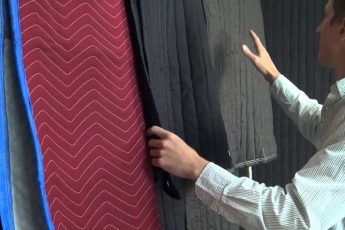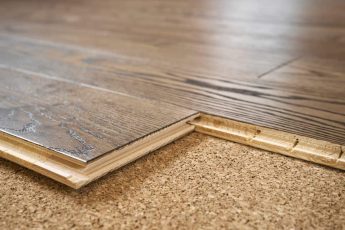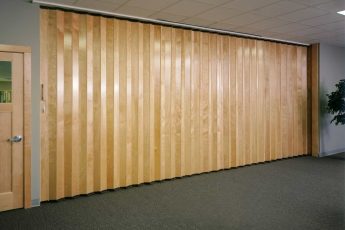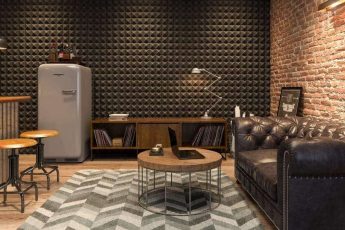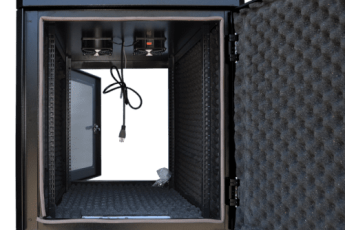Soundproofing a drum room involves installing various materials to reduce noise. These include Acoustic absorption sheets, Door sweeps, Weather stripping and even Acoustic foam. You can also install acoustic treatment panels or frequency traps to reduce drum noise. However, these measures are not cheap. If you are not able to afford these measures, you can use other techniques such as using insulation foam, sound insulation panels and frequency traps.
Acoustic absorption sheet
If you have a drum room, you can use an acoustic absorption sheet to soundproof it. This type of soundproofing material is made of fibers or synthetic materials that can absorb sound. The absorption material will reduce echo in the room and prevent unwanted circuitous sound waves from entering and exiting the room.
The sheet can be used as a wall covering to reduce sound bleed-through. It will not completely soundproof the drum room, but it will reduce echo. Generally, a ten-decibel reduction in sound is enough. This means that the acoustic absorption sheet can reduce the noise in half.
When installing an acoustic absorption sheet, you should use a soundproof sealant to seal it. This will prevent sound waves from leaving the room and will minimize the likelihood of damage to your drums. The acoustic sealant will act as an insulating layer between the drywall sheets. Ensure that the drywall is correctly caulked and that there are no gaps between the sheets.
Another way to soundproof a drum room is to use window plugs. These will fit into window openings and will block the air and light in the drum room. They will also reduce the chance of damage to nearby rooms. You should store the window plugs in a closet or under a bed.
Adding soundproofing walls to a drum room is a major investment, but the investment will pay off in the long run. Acoustic absorption sheet is available as an optional option and can be placed over an existing wall or inside it. It is a cheaper alternative to knocking down walls.
Door sweeps
One of the most important steps in soundproofing a drum room is to seal doors. You can use door sweeps, flexible sealants, or insulation foam to block any gaps that cause the noise to escape the drum kit. The flooring should also be deadened, and a thick rug beneath the drum set will help keep the sound contained.
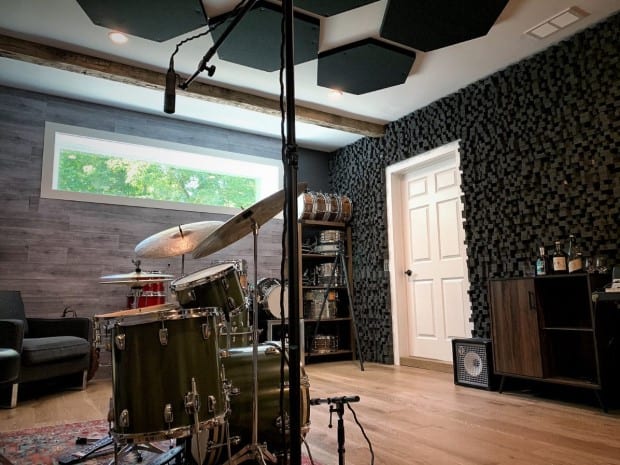
A door sweep has a durable adhesive backing and a hook and loop fastener. It is easy to remove and clean. Door sweeps can significantly reduce the sound transmission through the door. Depending on the thickness of the door and its thickness, a door sweep can block up to 1.5 inches of door gap. Some door sweeps are Velcro-style, while others are non-stick or self-adhesive. Both door sweeps and weatherstripping kits provide soundproofing, as they also stop air leakage.
Sound travels through air at much faster speeds than it does through solid objects. In addition to the spaces beneath doors, there are also small gaps between hinges that allow sound to escape. And because interior doors typically have an opening underneath them for ventilation, this opening can be a perfect place for drum noise to escape. Fortunately, door sweeps are inexpensive and effective.
Another important step in soundproofing a drum room is to take measurements of the internal space. This measurement will help you determine the best room size to soundproof. During the construction process, it is important to remember to leave a 40mm gap between the outer room wall and the main shell of the drum room.
Weather stripping
Soundproofing a drum room is a great way to cut down on the noise you make while drumming. A common source of air leaks is the door, and Soundproof Weather Stripping Door Kits can prevent leaks around the door and in the bottom seam of the door.
You can use a variety of sealants and adhesives to prevent noise from escaping your door. These products can be applied to almost any type of door. They come with a strong adhesive peel and stick backing, which helps them stick firmly to the door. Using this type of sealant will help reduce noise while also keeping out dust and bugs.
You should also consider installing acoustic foam between the walls and the drum room. This material will help reduce noise and make the room look cool. It comes in different colors and designs. You can even arrange the pieces in unique ways. To make sure the soundproofing is done correctly, you must measure the space.
If you don’t have much budget, you can install insulating sealant around doors and windows. This is an inexpensive method that complements the weather stripping method. Alternatively, you can purchase soundproof blankets. These are usually made from polyester or fibreglass and form a dense protective layer that can absorb large amounts of sound. Different types of blankets absorb different frequencies, so you will need to consider the material of your blanket.
While soundproofing a drum room is not an impossible task, it is a good idea to take advantage of available soundproofing materials. You can also install inexpensive bass traps to cut sound. Another cost-effective option for soundproofing a drum room is drywall. Depending on how dense the blocking layer is, you can either use drywall or other soundproof material. For the most effective soundproofing, multiple sheets of drywall should be used.

Acoustic foam
If you’re attempting to soundproof a drum room, you’ll probably want to use acoustic foam. This type of material can block out most high frequencies, but can also enhance sub-1000Hz frequencies. It’s also easier to install than MLV.
The first step in soundproofing a drum room is to identify the gaps. This will help determine how thick of a layer of soundproofing is necessary. Secondly, you’ll want to consider the type of window treatments you’ll need. If possible, choose drapes with thicker material. Additionally, look for blackout curtains that are thermally-insulated. These are ideal because they can be matched to acoustic foam panels.
Lastly, consider installing sound absorption panels. This will cut down on echo and sound bleed-through. You can install these panels on walls, ceilings, and even lower floors. While they won’t completely soundproof a drum room, they will significantly reduce the noise in it. Some acoustic panels can absorb up to ten decibels of sound, which is equivalent to turning the volume down half.
Another option is to install fiberglass blankets inside the drum room. This will help control impact noises and reduce sound reverberation. These products can be expensive, but they’re worth the investment. Acoustic foam is an effective soundproofing option, but it’s not a foolproof solution.
Soundproofing walls is expensive. You’ll need to strip walls, install resilient channels, and add insulation. These solutions aren’t cheap, but can result in a better drum sound. For a more affordable solution, you can use acoustic panels, which are commonly used in film and recording studios. The panels also reduce noise bouncing off the walls.
Tennis ball riser
Tennis ball risers are a great way to soundproof your drum room. They can be purchased or built from tennis balls and wood. They are also an inexpensive way to soundproof your drum room. In addition to absorbing the sound, tennis balls can also increase stability and absorption of sound vibrations.
These risers are typically made from OSB or MDF and are usually made of two 3′ x 4′ sheets. A scatter rug is then added to the top, and tennis balls are fixed to the bottom. These risers should have a six-inch grid so that the tennis balls are evenly distributed.
You can purchase tennis balls at a sporting goods store or at a hardware store. Tennis ball risers are easy to build and can help reduce the sound vibrations in your drum room. Depending on where you live, you may have to buy carpet padding and rock wool insulation. You can also use interlocking gym mats as sound attenuation.

When you use a drum riser, it can help you isolate the drums from the floor, which is a common problem in drum rooms. They also help provide a visual focal point to the stage and break up the straight line of performers. When used in conjunction with other soundproofing techniques, a tennis ball drum riser can be a very effective solution.
Tennis ball drum risers are not perfect and are not foolproof, but they do work. You should test them before you install them, as you may need to experiment with different materials. If you’re not sure what will work best, you can also try a noise isolation pad underneath your kick drum pedal or high hat pedal.

